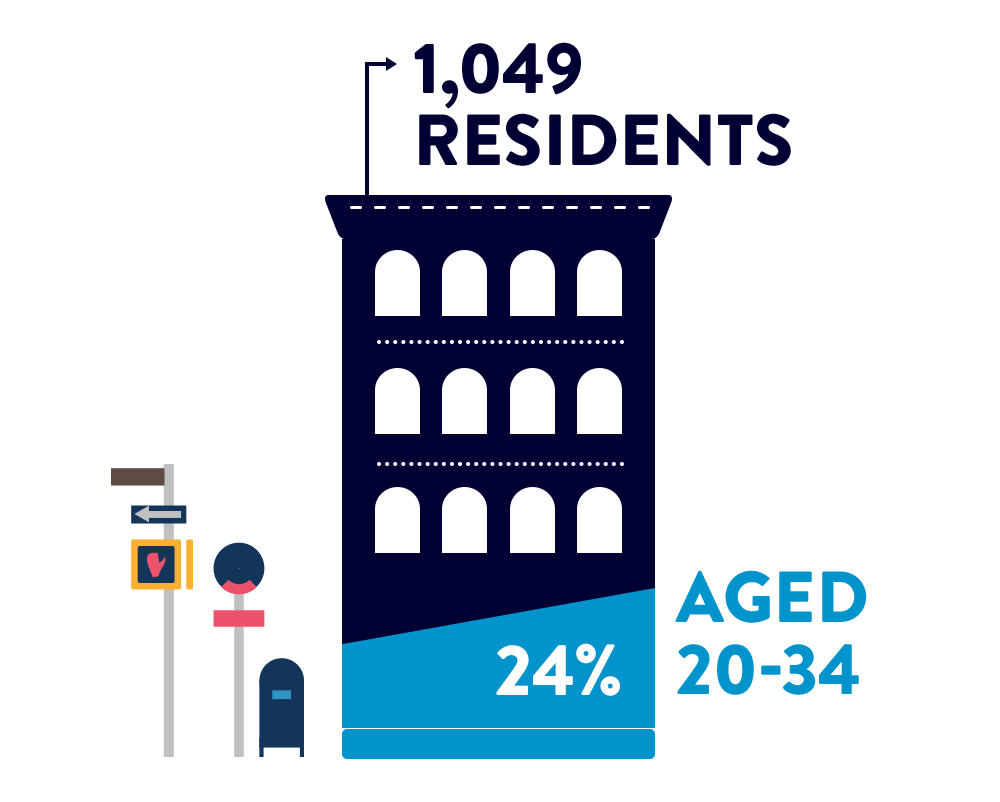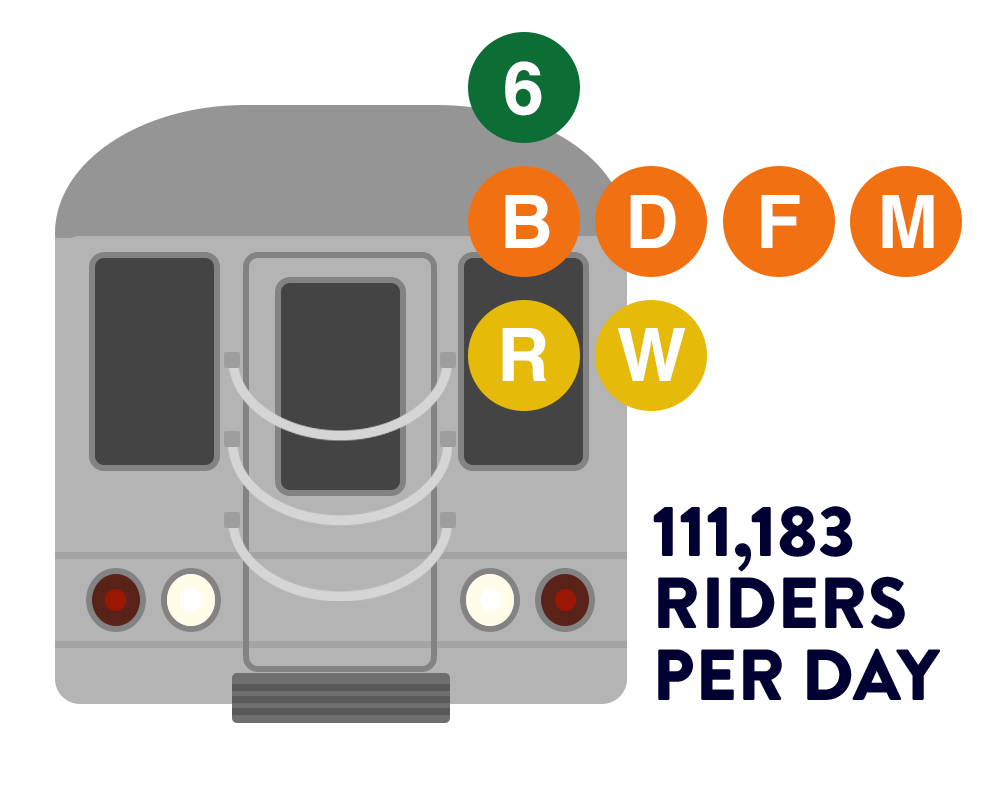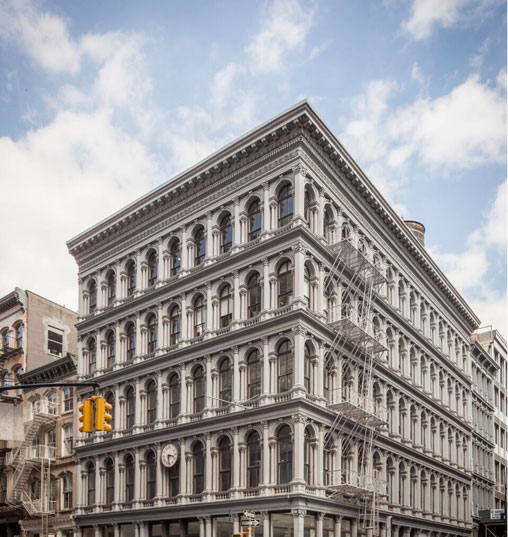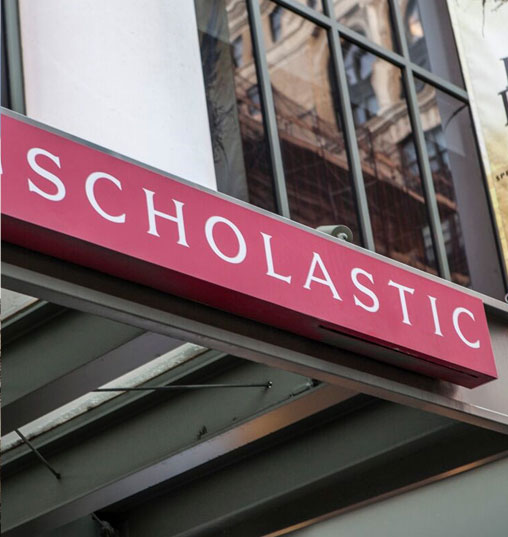SoHo Broadway boasts a million and a half square feet of retail offerings, three million square feet of office space and over 21,000 workers. Together these businesses operate within the larger SoHo mixed-use neighborhood, with 25,000 residents attracted to the area’s accessibility, landmark cast-iron architecture and cutting-edge creative vibe.

There are 1,049 residents who live on SoHo’s Broadway, 24% of which are 20-34 years old.

57% of businesses on SoHo’s Broadway are Technology, Advertising, Media, Information (TAMI) and Fashion industries.

Subway ridership brings 111,183 people to the district every day.
23rd Street/Madison Square: 25,973/day
14th Street/Union Square: 108,440/day
Herald Square: 126.776/day
SoHo Broadway is home to a vast array of national and international retailers as well as growing TAMI (technology, advertising, media, and information) businesses which are thriving in this vibrant mixed-use community.
 "Breather needs to be where our clients are. Our neighbors on Broadway in SoHo mirror a blend of tech and creative companies that are Breather’s most frequent users. Our team loves the energy, convenience and architecture of SoHo Broadway. Having easy access to all of the major subway lines, SoHo’s cobblestone streets and great food is a major perk. "Packy McCormick, New York City General Manager, Breather
"Breather needs to be where our clients are. Our neighbors on Broadway in SoHo mirror a blend of tech and creative companies that are Breather’s most frequent users. Our team loves the energy, convenience and architecture of SoHo Broadway. Having easy access to all of the major subway lines, SoHo’s cobblestone streets and great food is a major perk. "Packy McCormick, New York City General Manager, Breather "Soho’s transition from a manufacturing district to a tourist destination is a microcosm of New York City’s evolution over the past 100 years. Like the many long time residents, institutions, and invested business owners who care deeply about the future of our community and New York City, our firm is committed to designing better, more resilient places in an urban context. There is no better place to do this than from an office in Soho, a vibrant, culturally-rich neighborhood."David Briggs, Founder, Loci Architecture PC
"Soho’s transition from a manufacturing district to a tourist destination is a microcosm of New York City’s evolution over the past 100 years. Like the many long time residents, institutions, and invested business owners who care deeply about the future of our community and New York City, our firm is committed to designing better, more resilient places in an urban context. There is no better place to do this than from an office in Soho, a vibrant, culturally-rich neighborhood."David Briggs, Founder, Loci Architecture PCSoHo’s Broadway is located in the SoHo Cast-Iron Historic District and is home to some of the City’s most iconic buildings, artwork and businesses. The area was designated an historic district in 1973 due to the proliferation of buildings with cast iron facades; cast iron made it possible to construct ornate facades that were a cheaper alternative to granite or marble. The district contains about 500 buildings. In 2010, an extension of the boundaries added about 135 buildings that were not included in the original district designation. An ever-changing area, SoHo has always brought together art, industry, residents, and retail, each adding to the vibrancy and unique character of the district. Below are a few of the district’s many standout architectural treasures. If you want to take a look at the designation reports for the historic district or any landmarked buildings, please check our Resource Library page.

The Haughwout Building at 488 Broadway at the northeast corner of Broome Street was built in 1857 by Walter Langdon Jr., grandson of John Jacob Astor, who purchased the land in 1802. Modeled on a 16th-century Venetian library, it is one of the finest examples of cast iron architecture in New York City. The building was originally the home of the Haughwout Emporium, owned by Eder V. Haughwout, manufacturer and purveyor of fine china, cut glass, silverware and chandeliers. The building was also home to the first commercial elevator designed and installed by Elisha Graves Otis (founder of Otis Elevator) and which opened directly onto Broadway. It was designated a New York City landmark in 1965, and was added to the National Register of Historic Places in 1973. Now owned by Ponte Gadea, a real estate investment company, the Haughwout houses commercial tenants on its upper floors and a large retail space on the ground floor.

The Scholastic Building, located at 557 Broadway near Prince Street, is the headquarters of the Scholastic Corporation. Designed by Pritzker-Prize-winning architect Aldo Rossi to pay homage to SoHo’s existing facades, this 10-story building was the first new building to be built in the SoHo-Cast Iron Historic District. The columns of the Broadway façade mirror those of its cast iron neighbors and the contextual rear façade echoes its industrial surroundings. Scholastic is a leading publishing, education, and media company that publishes and distributes books and other educational materials worldwide. As the world’s largest publisher of children’s books, Scholastic is perhaps best known as the publisher of the wildly popular Harry Potter and The Hunger Games book series.

The Wall, Forrest “Frosty” Myers’ now iconic public art installation on the Houston Street side of 599 Broadway is also known as “The Gateway to SoHo.” The piece consists of 42 green-painted girders bolted to braces and spaced evenly on a blue background that spans over eight stories. Myers created this piece in 1973 for around $2,000 through City Walls, a not-for-profit organization established in 1969 that worked with artists and communities to revitalize New York City through public art. The building’s owner originally commissioned the piece to cover existing architectural scars, joists that remained since an adjoining building was taken down to widen Houston Street. S+F. The Wall now welcomes the residents, tourists, and office workers crossing Houston Street to head south into SoHo.

The 12-story Little Singer Building at 561 Broadway is not really that little. It is called such because there used to be an even bigger Singer Building, that was once the tallest building in the world. The building was erected to house the Singer Sewing Machine Company’s offices and factory. The Little Singer has recessed windows and wrought iron balconies. If you look closely, you will notice that the balconies on each floor vary slightly in design. The Prince Street façade still bears a sign that reads “Singer Manufacturing Company.” In 1979 the building was converted to a coop, with 20 offices and 15 JLWQ units. The building was restored in 2008 by Bone Levine Architects, who recreated the original glass-and-ironwork sidewalk canopy. Mango, a clothing company, currently occupies the ground-floor space.